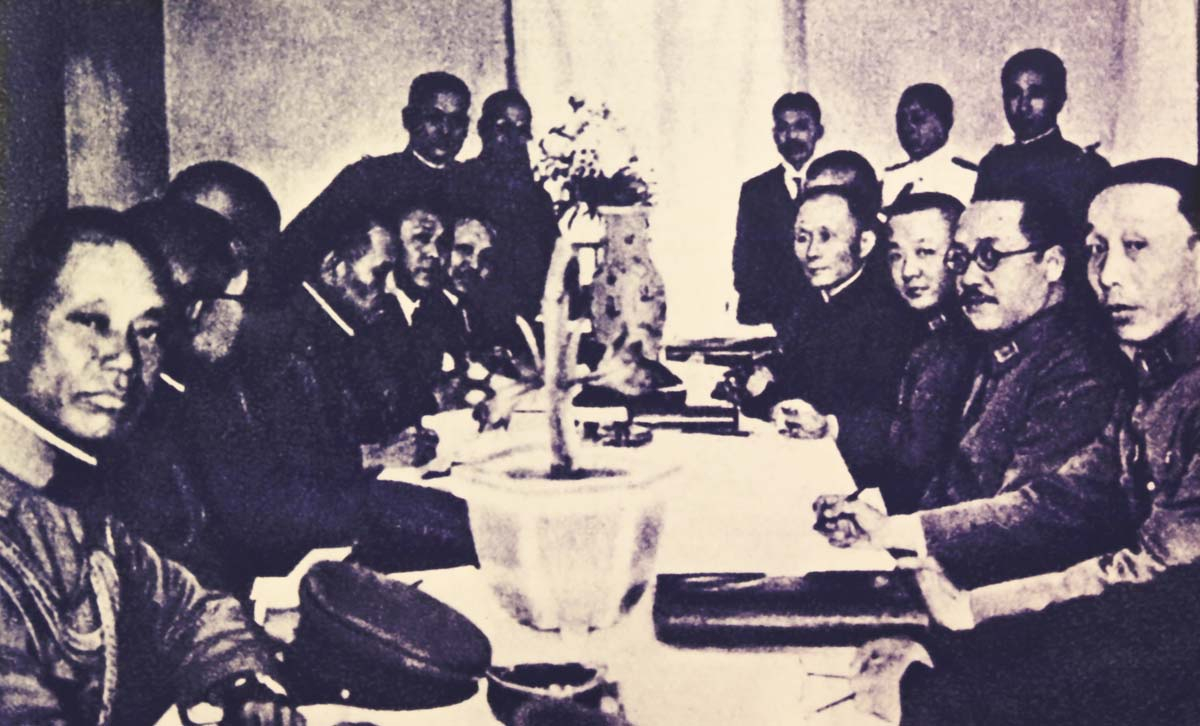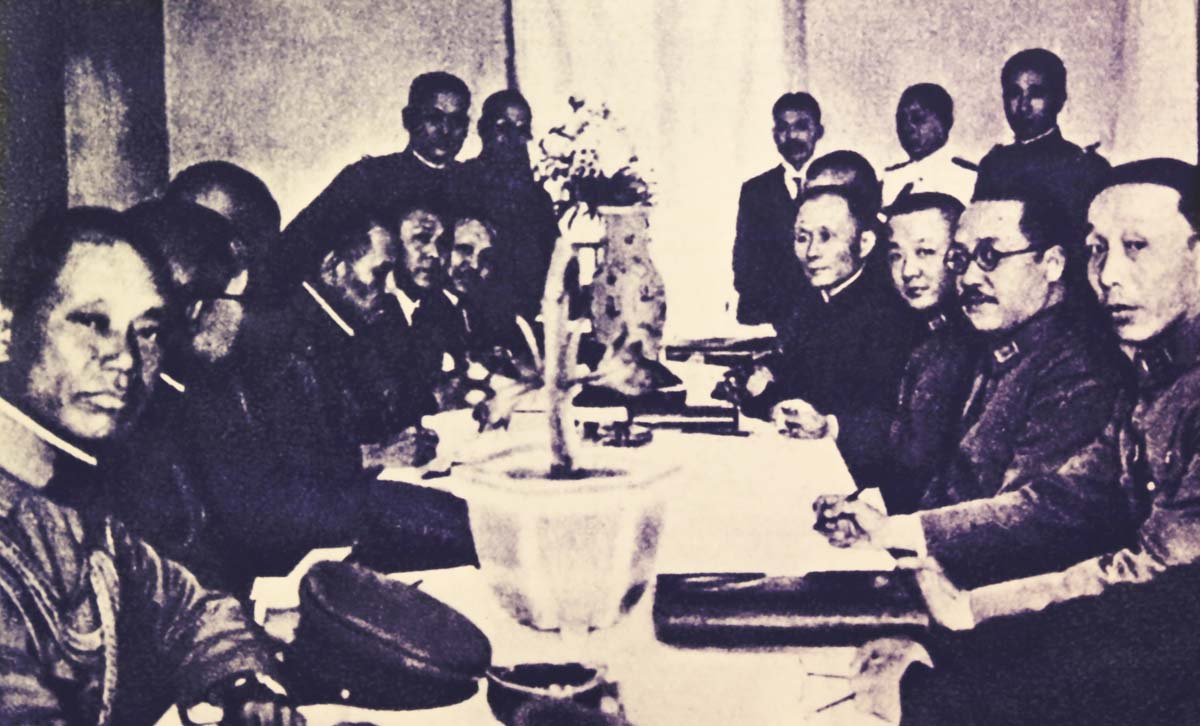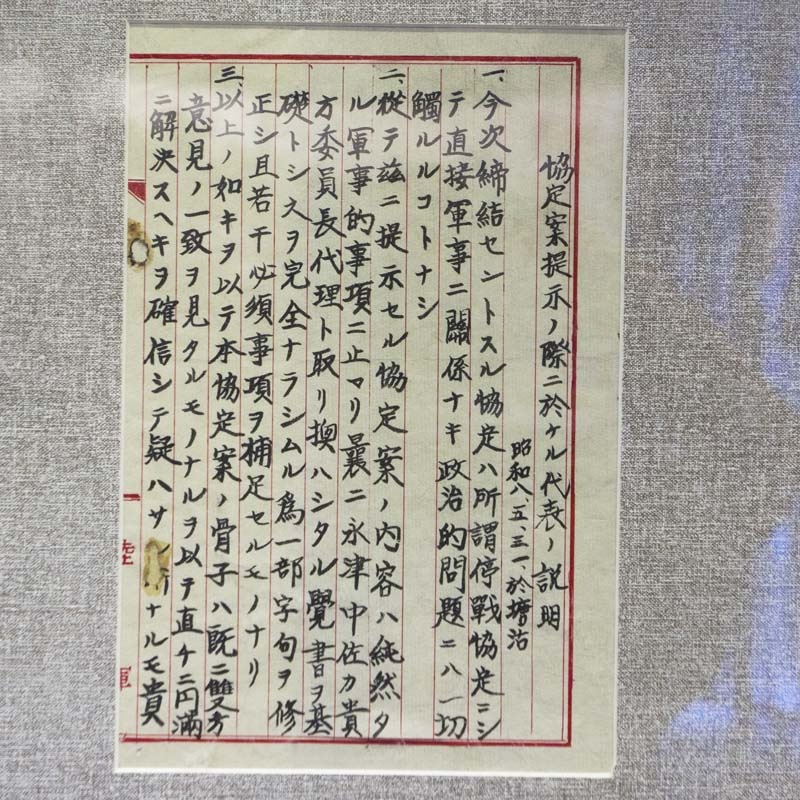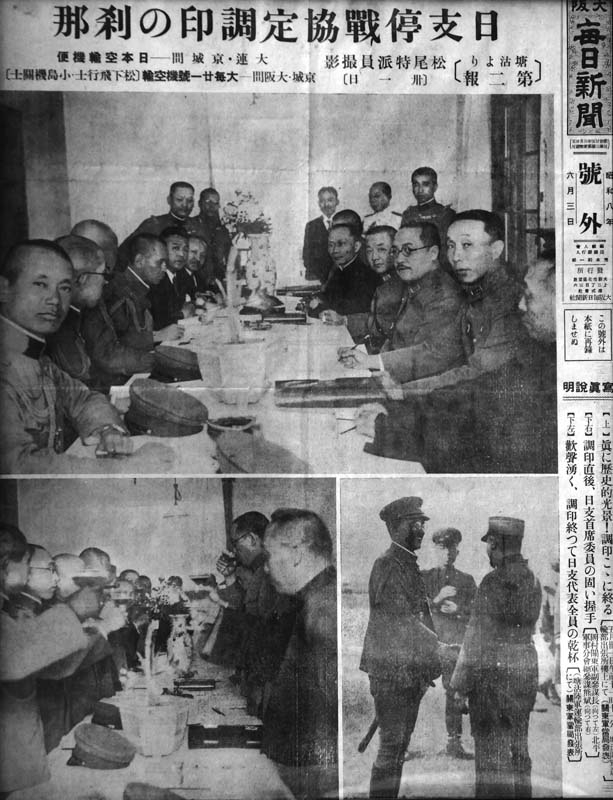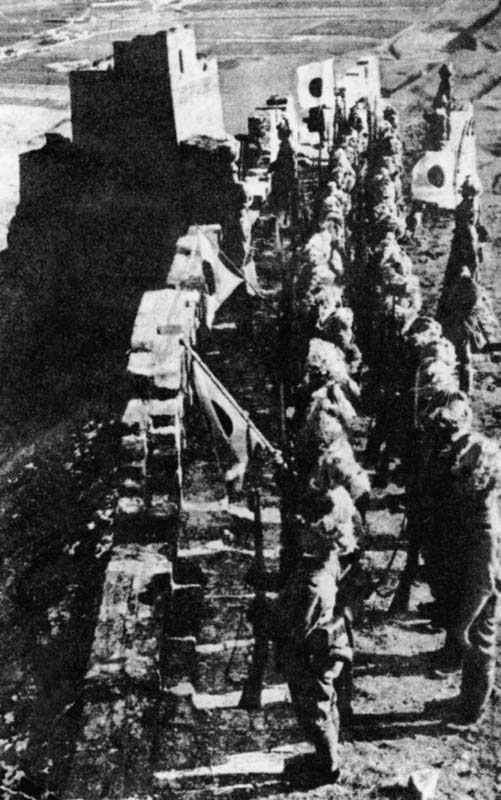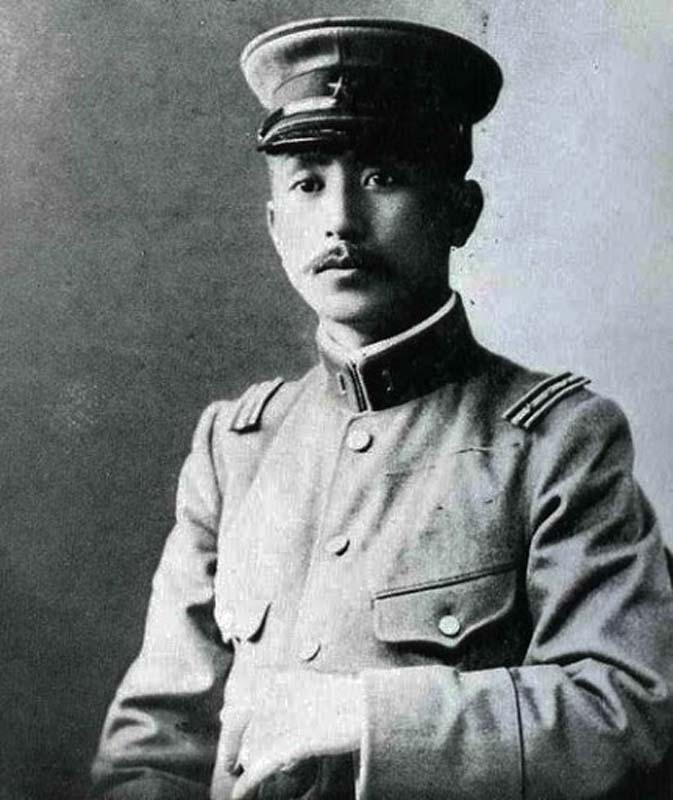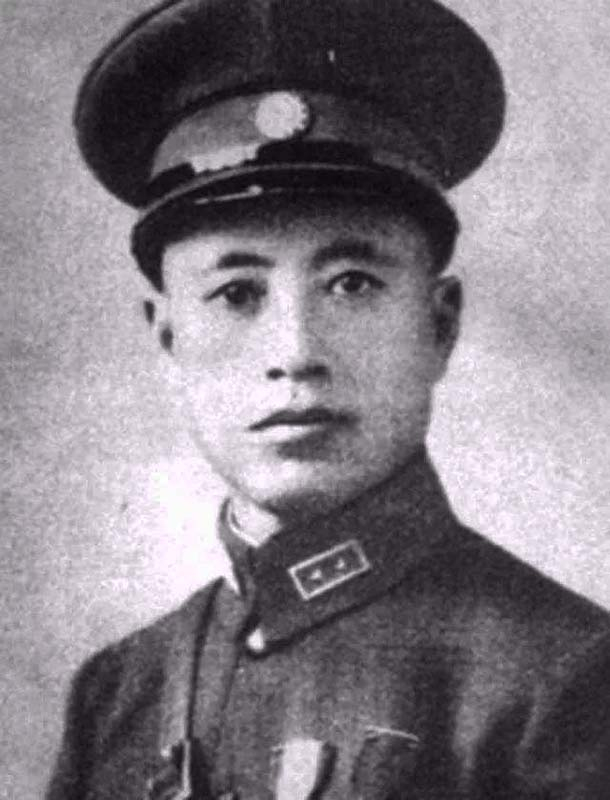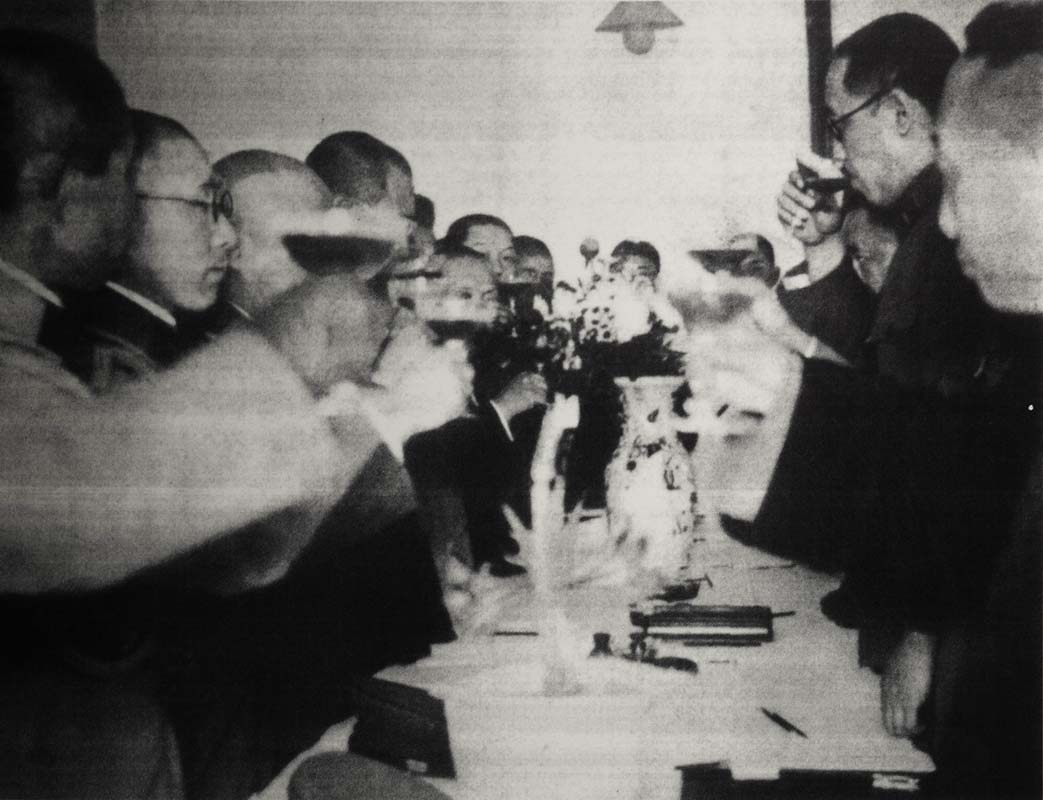The Defence of the Great Wall locked the Chinese and Japanese armies in stalemate along the Great Wall. The Japanese army crossed the Great Wall but failed to push deep. Meanwhile, the Nationalist Government of the Republic of China, who was busy with suppressing the Communists in the south, was anxious to compromise with the Japanese in North China. Therefore, China and Japan signed the Tanggu Truce (《塘沽停戰協定》) on 31 May 1933, which stipulated that the Chinese army should retreat to the areas south and west of the Great Wall in North China. The Japanese army committed not to cross that retreat line to purge the Chinese army and instead move back to the Great Wall line. This meant that a 100-kilometre demilitarised zone was established south of the Great Wall, where public security was maintained by the Chinese police. The agreement in fact recognised the Great Wall as the “national border” between China and the puppet state of Manchukuo (偽滿洲國), and acknowledged eastern Suiyuan Province (綏遠), northern Chahar Province (察哈爾), and eastern Hebei Province (河北) as the zones where the Japanese army could move freely. These facilitated Japan’s future advancement into North China.
From May to July 1935, Japan used the anti-Japanese campaigns in Hebei as an excuse to make a series of unreasonable demands on China. The demands included: (1) dismissing the Chinese military and political personnel specified by Japan; (2) abolishing or dissolving the party and government agencies of the Nationalist Government specified by Japan; (3) withdrawing the Central Army and Northeast Army of the Nationalist Government in Hebei; (4) outlawing all anti-Japanese activities. During this period, Umezu Yoshijiro, the Commander of Japan’s North China Garrison conducted repeated secret negotiations with He Yingqin (何應欽), the acting chairman of the North China Subcommission of Central Military Commission, through memoranda and response letters. Finally, the two reached an agreement, which became known as the He-Umezu Agreement (「何梅協定」). Although He Yingqin did not sign this agreement in writing, he accepted the Japanese demands orally and via the response letter, which severely weakened the Chinese party, Government, and military forces in Hebei as well as other anti-Japanese forces, while greatly strengthened the Japanese power in North China.
|
|
Is it right to deny the He-Umezu Agreement as China did not sign it in writing? |
|
|
See answer below. |
The Chinese troops on garrison duty at the Luowenyu Pass (羅文峪) of the Great Wall in March 1933. From March to May 1933, the Chinese and Japanese armies engaged along the Great Wall. The Japanese army had the upper hand but could not push deep. Meanwhile, the Nationalist Government wanted to focus on suppressing the Communists. The two sides thus settled on a truce.
The negotiation venue in Tanggu (塘沽). On 31 May 1933, the Tanggu Truce was signed.
The Japanese version of the Tanggu Truce.
The Japanese newspaper Mainichi Shimbun’s extra on the Tanggu Truce on 3 June 1933.
The Japanese troops singing the Japanese national anthem on the Shanhai Pass (山海關) of the Great Wall in December 1933. The Tanggu Truce stipulated that the Chinese army should retreat to areas west and south of the Great Wall in North China. North China further exposed to Japanese threat when the Japanese army continued to occupy strategically important areas like the Shanhai Pass, and was able to move freely in the vast areas of North China.
Umezu Yoshijiro, the Commander of Japan’s North China Garrison. From May to July 1935, Umezu Yoshijiro on behalf of Japan made a number of demands on He Yingqin, the acting chairman of the North China Subcommission of Central Military Commission, to curb anti-Japanese campaigns.
A photo of Yan Xishan (﹝閻錫山﹞, left), the governor of Shanxi Province (山西), and He Yingqin (right) from 1935. In that year, He Yingqin secretly negotiated with Umezu Yoshijiro through memoranda and response letters.
Yu Xuezhong (于學忠), the Commander of the NRA’s 51st Corps. One of Japan’s demands was to relocate Yu and his 51st Corps.
The 51st Corps was founded in February 1933 and Yu Xuezhong was its first commander. After participating in the Defence of the Great Wall, the 51st Corps was garrisoned in Hebei. As the army and Yu were resolute in fighting against the Japanese, they were transferred to northwest China to help suppress the Communists after the conclusion of the He-Umezu Agreement.
In 1935, the Japanese Kwantung Army celebrated the agreement reached between He Yingqin and Umezu Yoshijiro. The He-Umezu Agreement was not formally signed nor confirmed by diplomatic means, but China met Japan’s demands through practical actions.
The full text of He-Umezu Agreement was published in the Liberation Daily (《解放日報》), a newspaper in Xi’an (西安), Shaanxi Province (陝西), on 19 December 1935.
|
|
Is it right to deny the He-Umezu Agreement as China did not sign it in writing? |
|
|
Although the He-Umezu Agreement was not a formal written agreement between China and Japan, the two sides had repeatedly negotiated and the Chinese representative had, verbally, via letters, and even through practical actions, promised to meet Japan’s demands. This caused great harm to China. For example, on 9 June 1935, the Japanese representative brought the Chinese side the Memorandum from Umezu Yoshijiro to He Yingqin (《梅津致何應欽備忘錄》). The memorandum raised several requests, including the dismissal of Yu Xuezhong, the chairman of Hebei, the abolition of the 3rd Military Police Regiment, the dissolution of the Political Training Office of the Peiping (北平) Branch of the Military Affairs Commission and the Peiping Military Magazine, the disbarment of the Blue Shirts Society and the China Reconstruction Society, the revocation of all party offices within Hebei and the Peiping Branch of the Spirit Encouragement Society, and the withdrawal of the 51st Corps from Hebei. He Yingqin told the Japanese representative that, “By yesterday, all the demands made by Japan were fulfilled: first, Yu Xuezhong and Zhang Ting’e (張廷鍔) were transferred; second, the Political Training Office of the Peiping Branch of the Military Affairs Commission was abolished and the 3rd Military Police Regiment transferred; third, The Kuomintang Party Headquarters in Hebei Province was relocated to Baoding (保定), and the Kuomintang (中國國民黨) Headquarters in Tianjin (天津) stopped working; fourth, the organisations regarded by the Japanese side as a barrier to our bilateral relations, like the Spirit Encouragement Society and the Peiping Military Magazine, were outlawed; fifth, the 51st Corps was ordered to transfer.” He also sent the Response Letter from He Yingqin on 6 July: “We hereby inform you that on the matters raised by the Chief of Staff Sakai on August 9, we agree on all and expect the matters to be implemented independently. To Commander Umezu. He Ying-qin, on July 6 1935.” It was obvious that He accepted the content of the so-called agreement by the letter and fulfilled the Japanese requirements accordingly. |
Source of most photos used in this feature piece: Fotoe (pictures 1-5, 7, 9, 10) and misc. photo sources.




